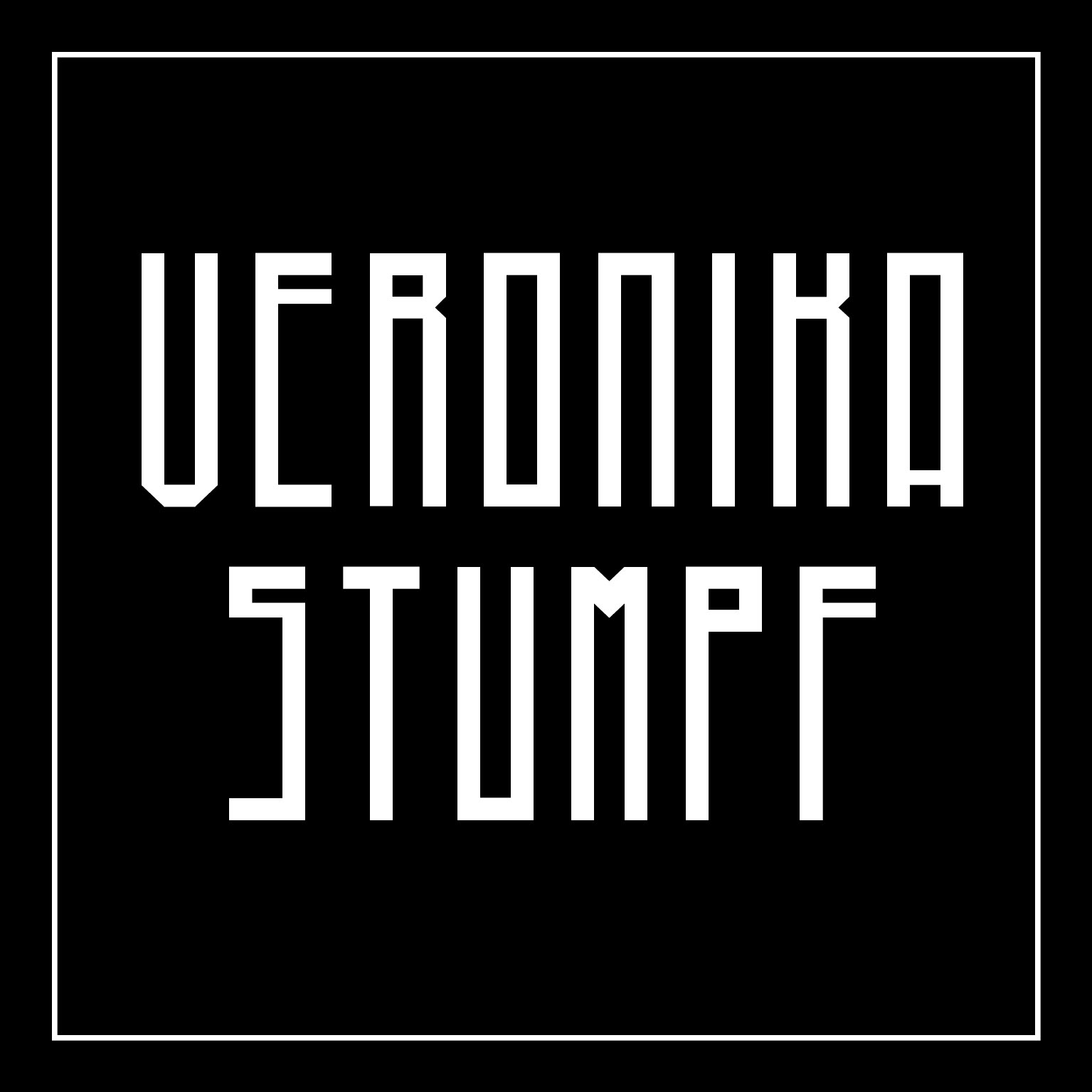This passion project of mine is inspired by Walter Moers' novel Der Schrecksenmeister and has served as a guiding influence from my bachelor's thesis to my work in the art department at the University of Konrad Wolf, where I contributed to the short film Eispin, der sehr Schreckliche.
While working with the story, my first task was to analyze and organize every descriptive element within it. By extracting detailed information about the scenery, storyline, and protagonist, I created a comprehensive reference book that serves as an extensive guide to all aspects of the narrative. Additionally, I summarized my findings through various visual representations illustrating the relationships between characters and the sequence of rooms described in the story.
This work provided the foundational inspiration for developing a unique art style and illustrations of this world.
The story follows the adventures of ECHO, a cat like creature, which embarks on a journey through the fantastical Zamonia universe in the city Sledwaya. Along the way, he encounters strange creatures, uncovers dark secrets, and faces numerous challenges that test his courage and creativity while fearing for his life living with a Alchemist wich he promised his life against one month of best board and lodging.
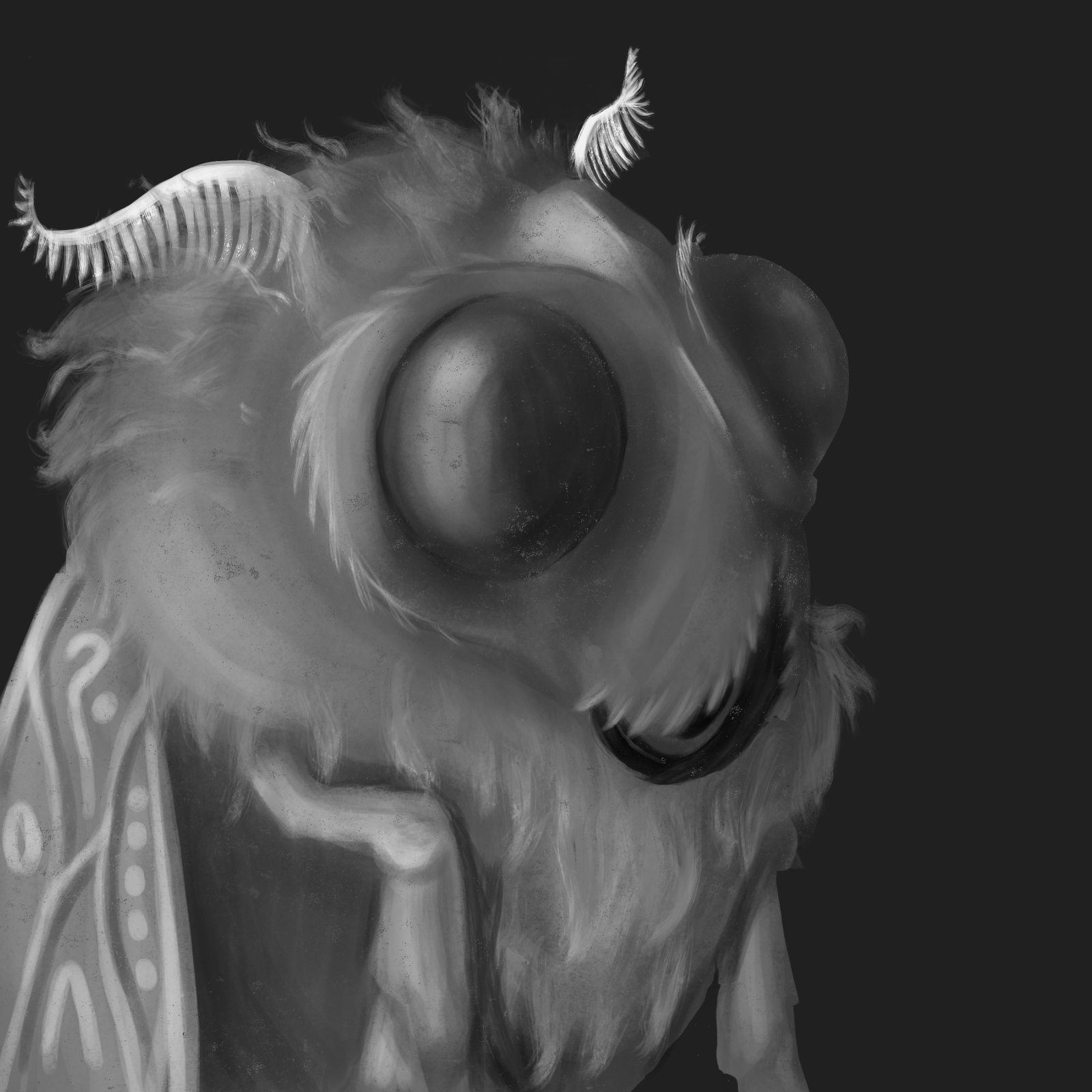
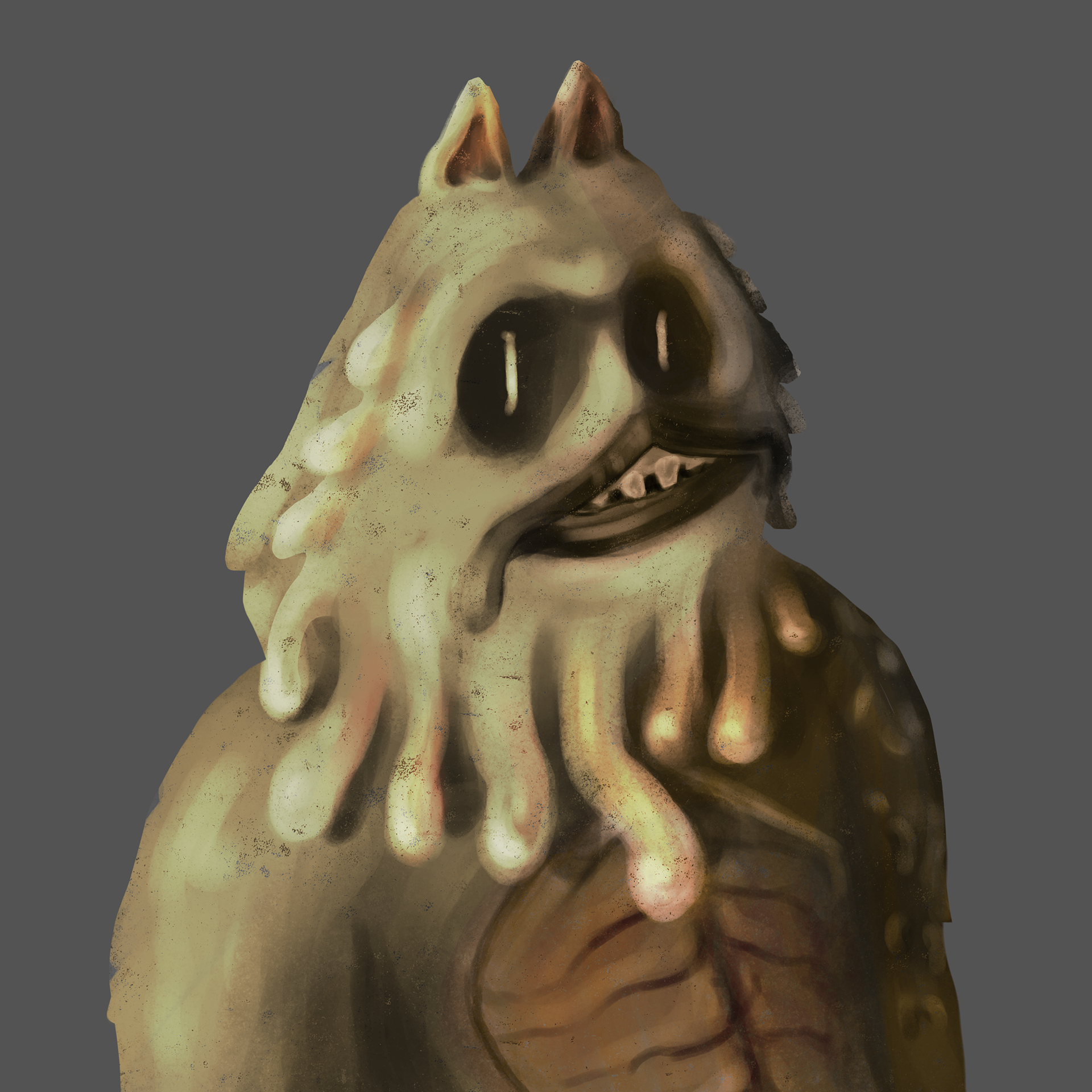
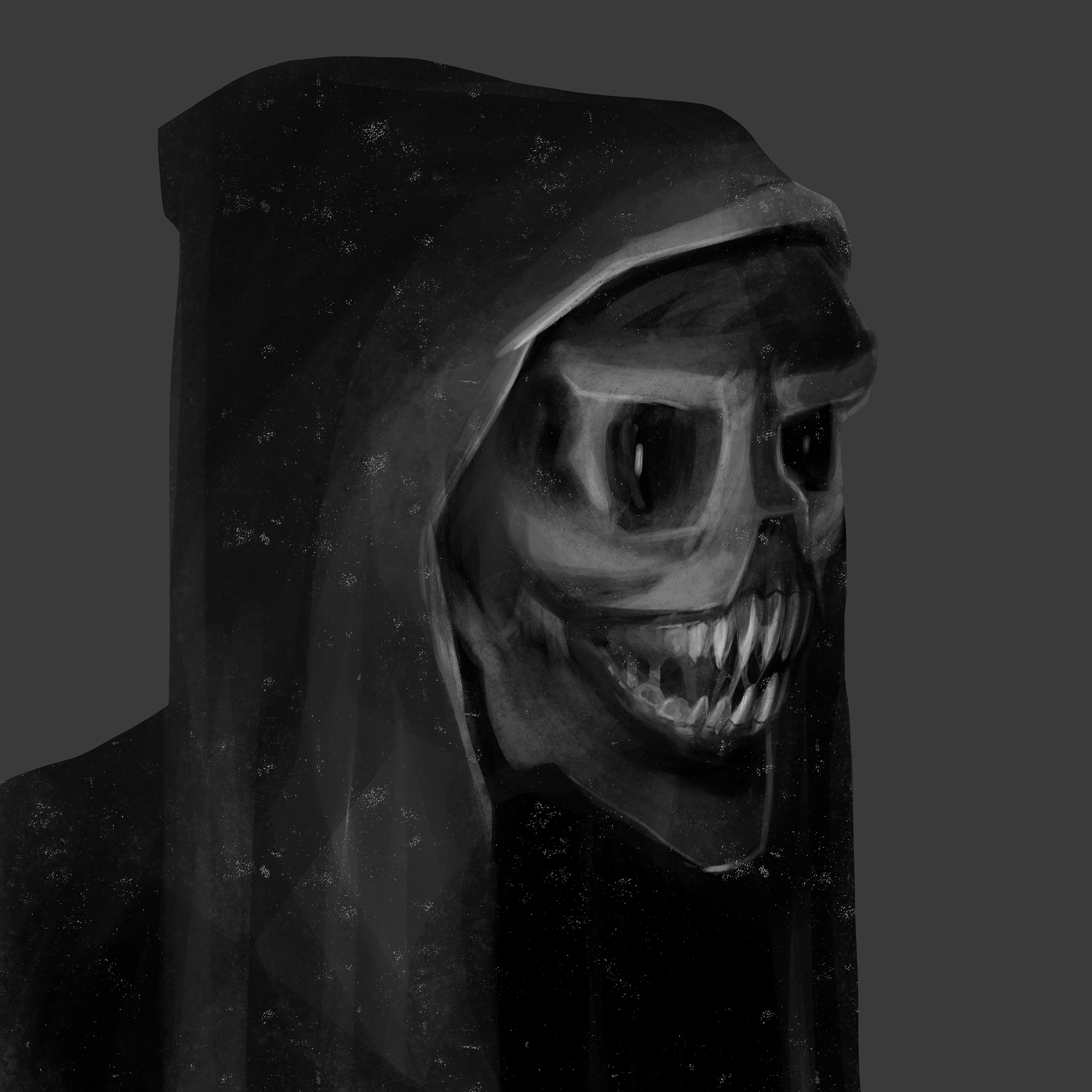
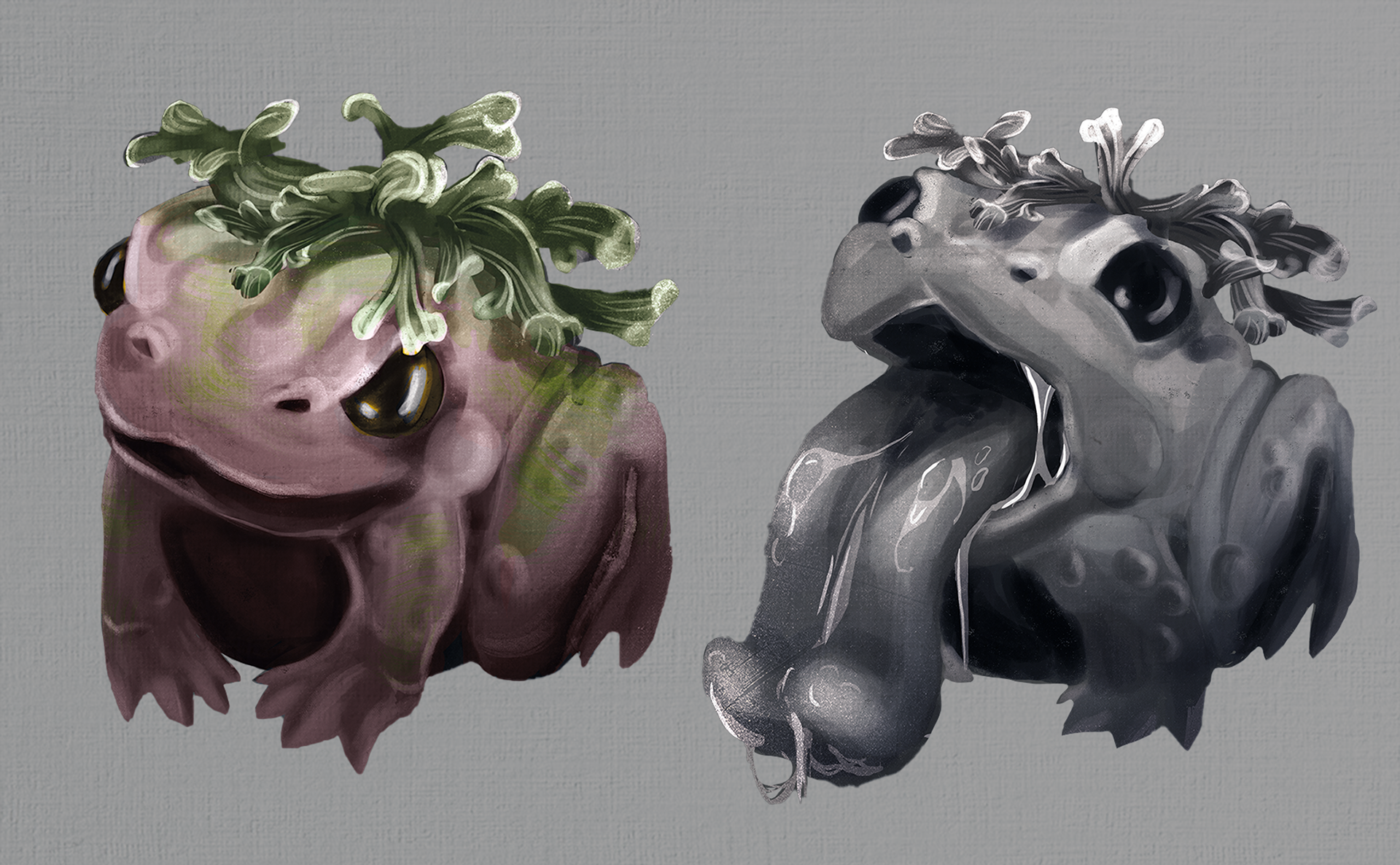
The labatory at night
Building upon the rich narrative and imaginative setting of the novel, I designed and constructed conceptual elements such as a castle, a forest environment, and various interior rooms. These elements aim to capture the whimsical yet mysterious atmosphere of the story, translating literary themes into visual concepts that evoke the fantastical world described by Moers.
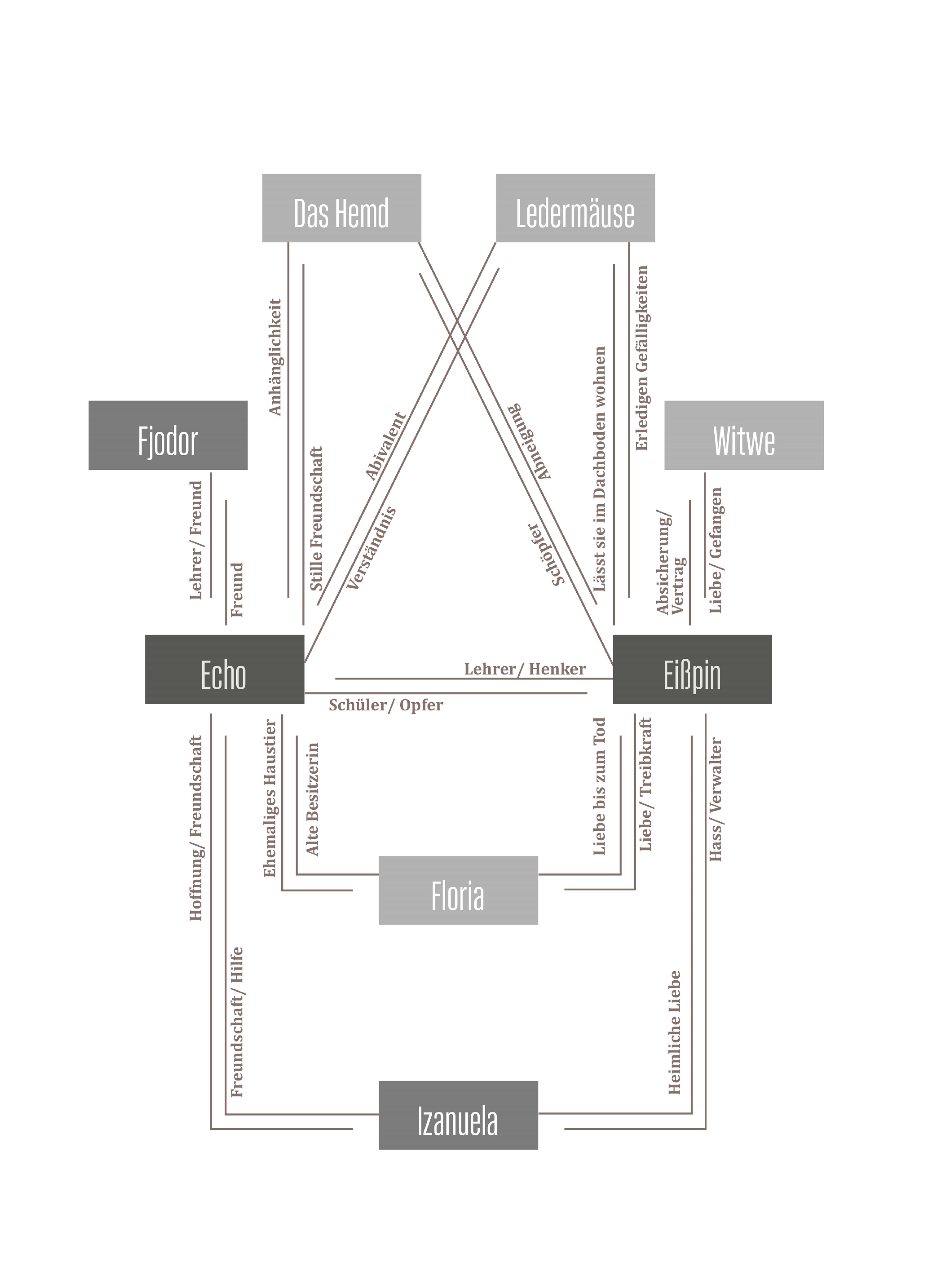
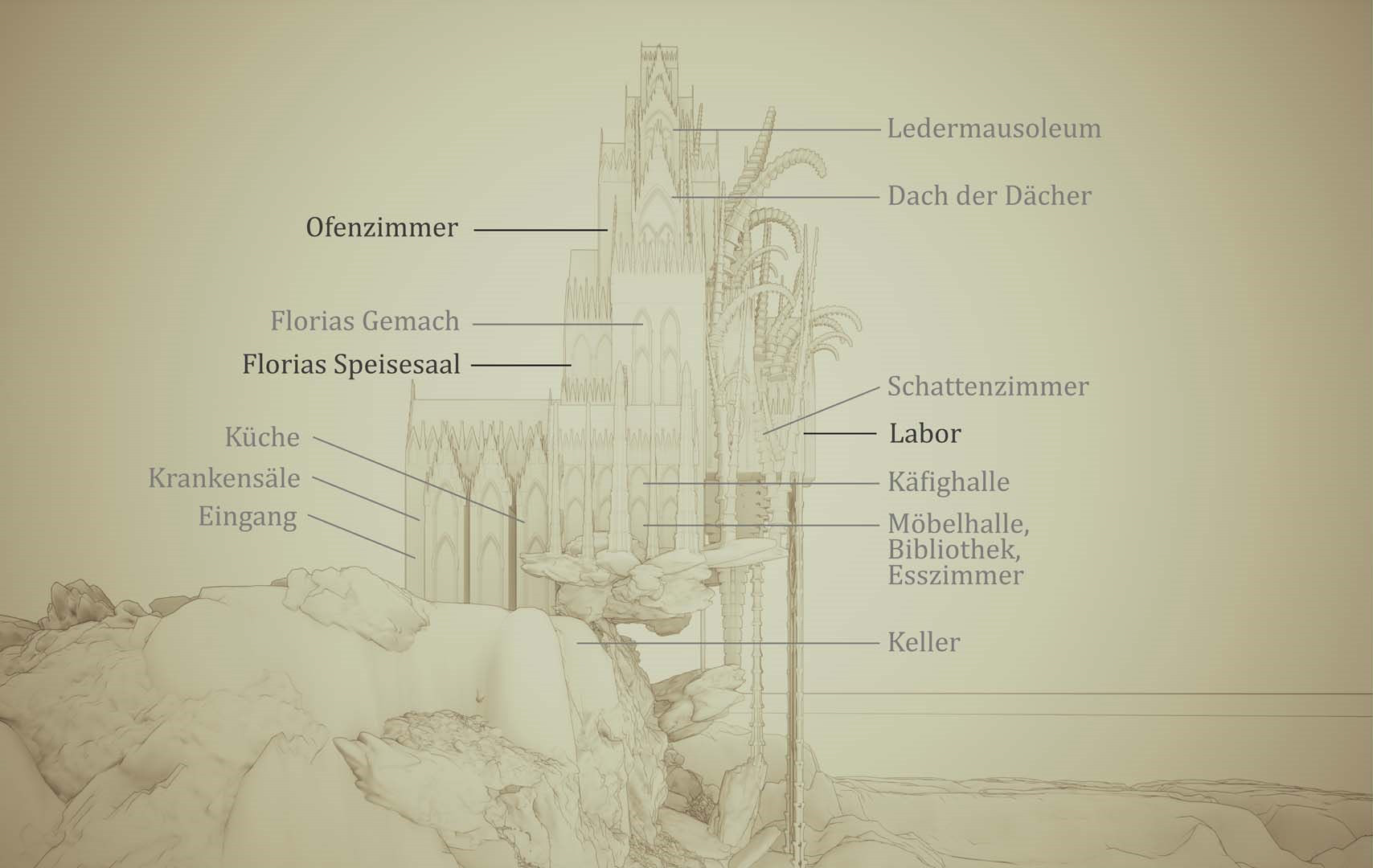
With the aid of my previous research I was able to design the complete castle and locate each room as described in the book. My interpretative freedom allowed me to divide the building in a "good" and "bad" side, depending on the associated meaning the room has.
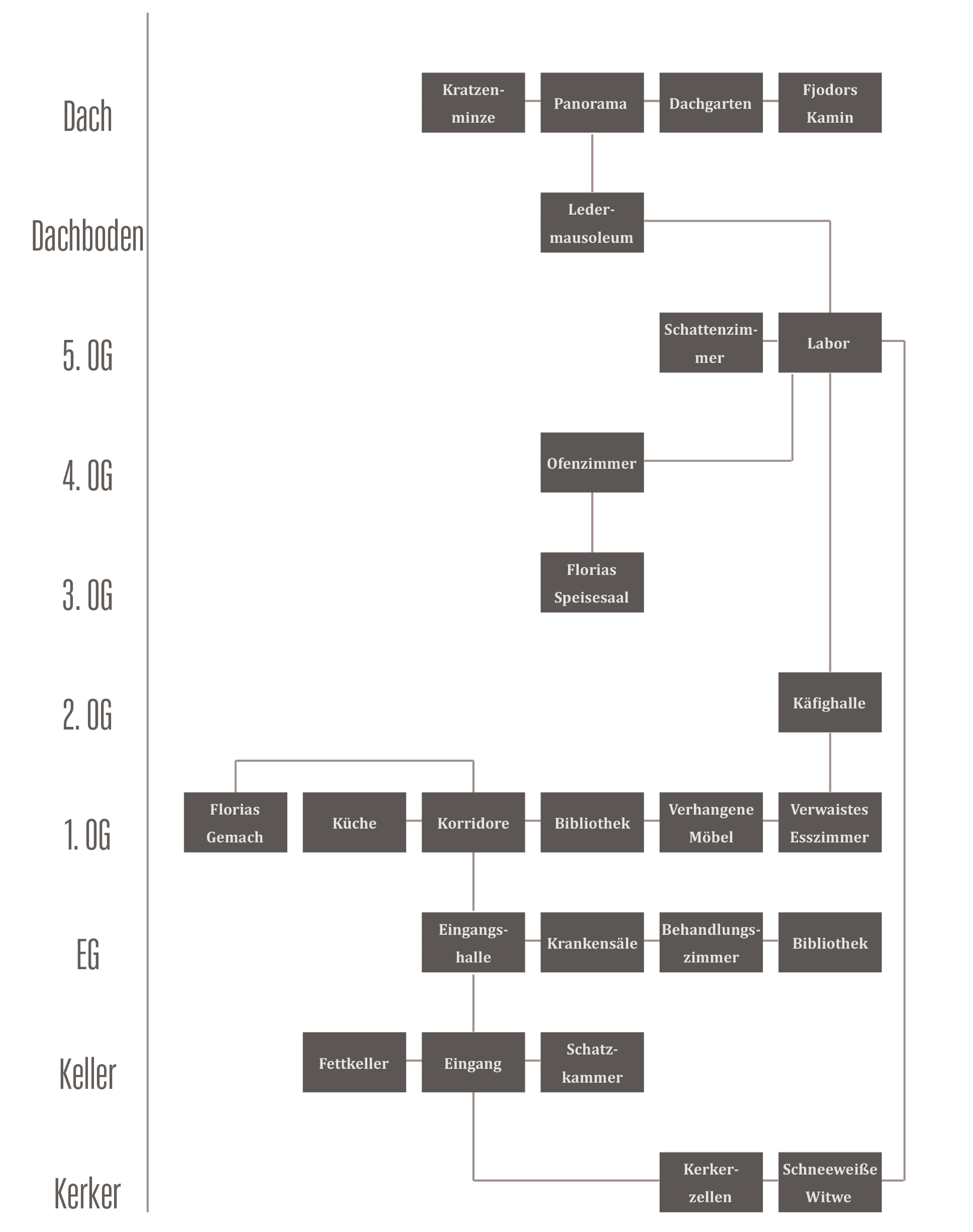
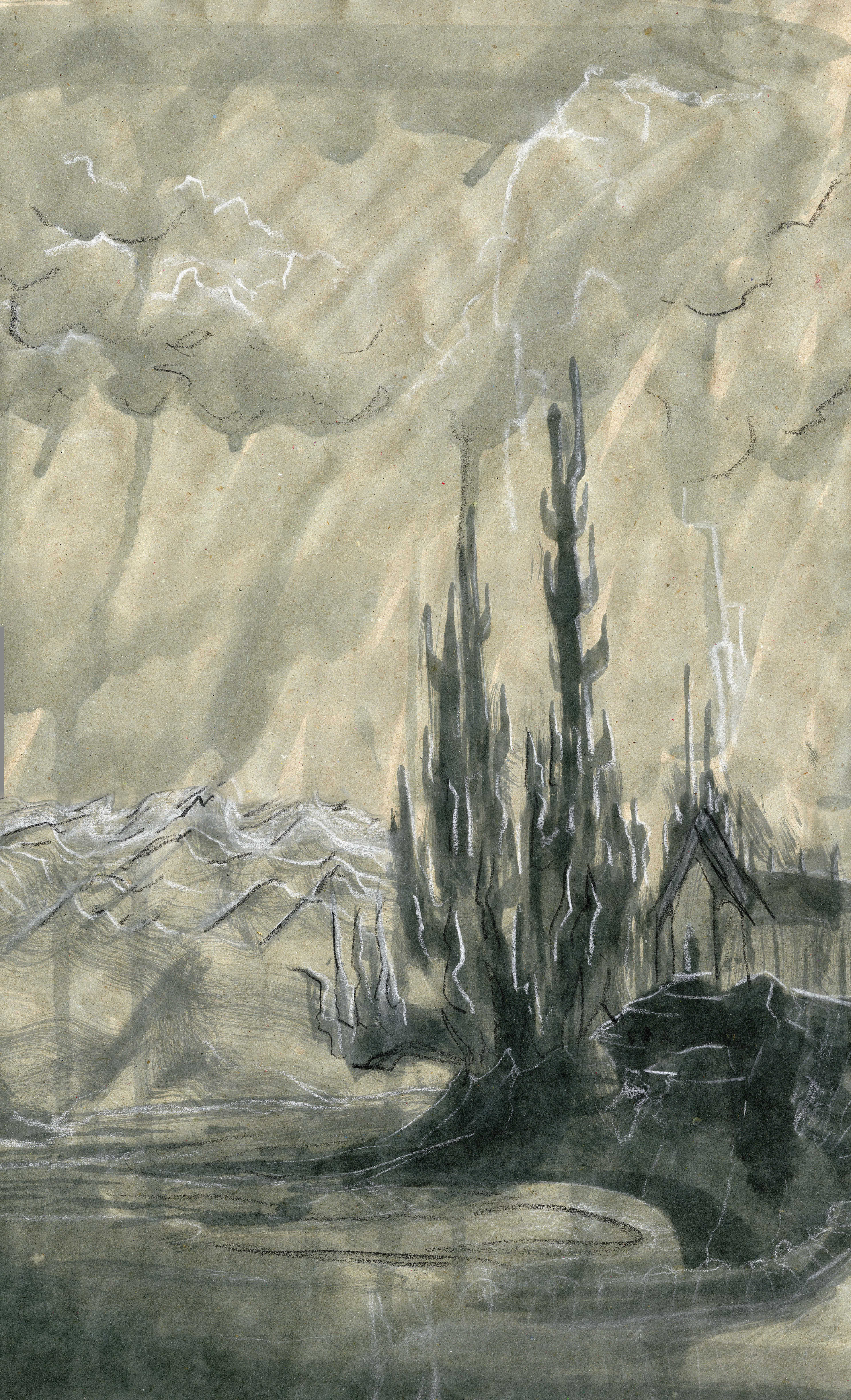
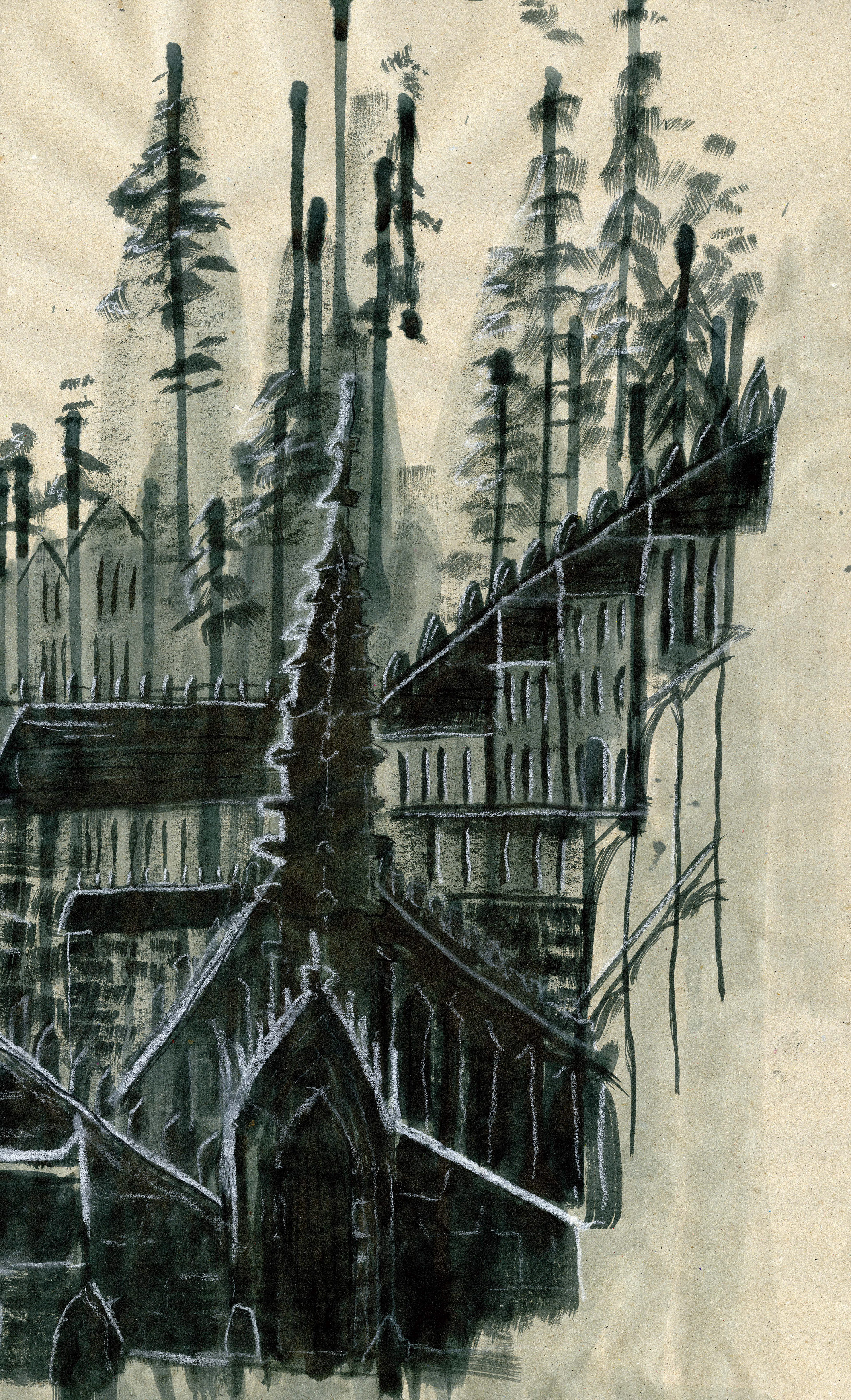
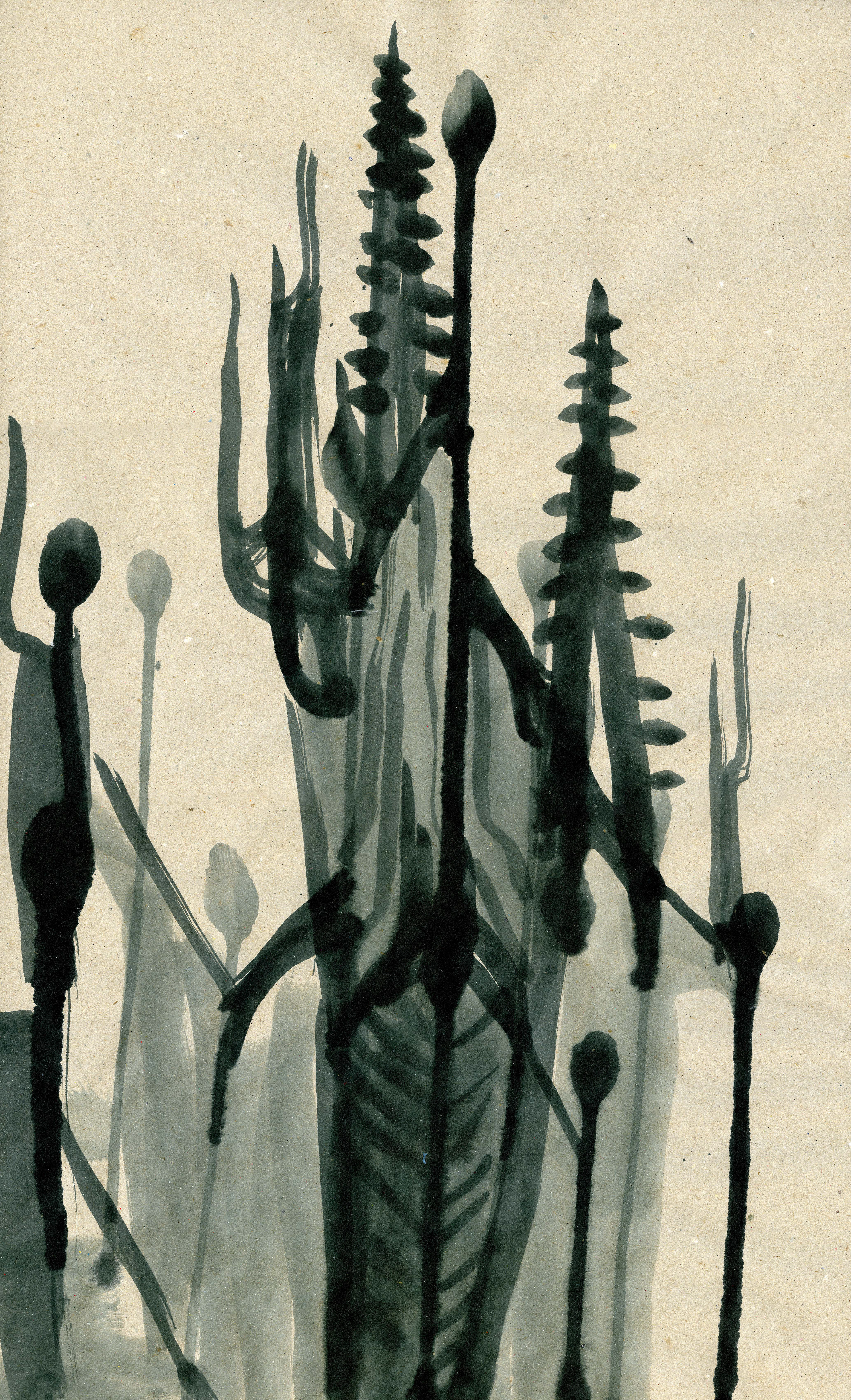
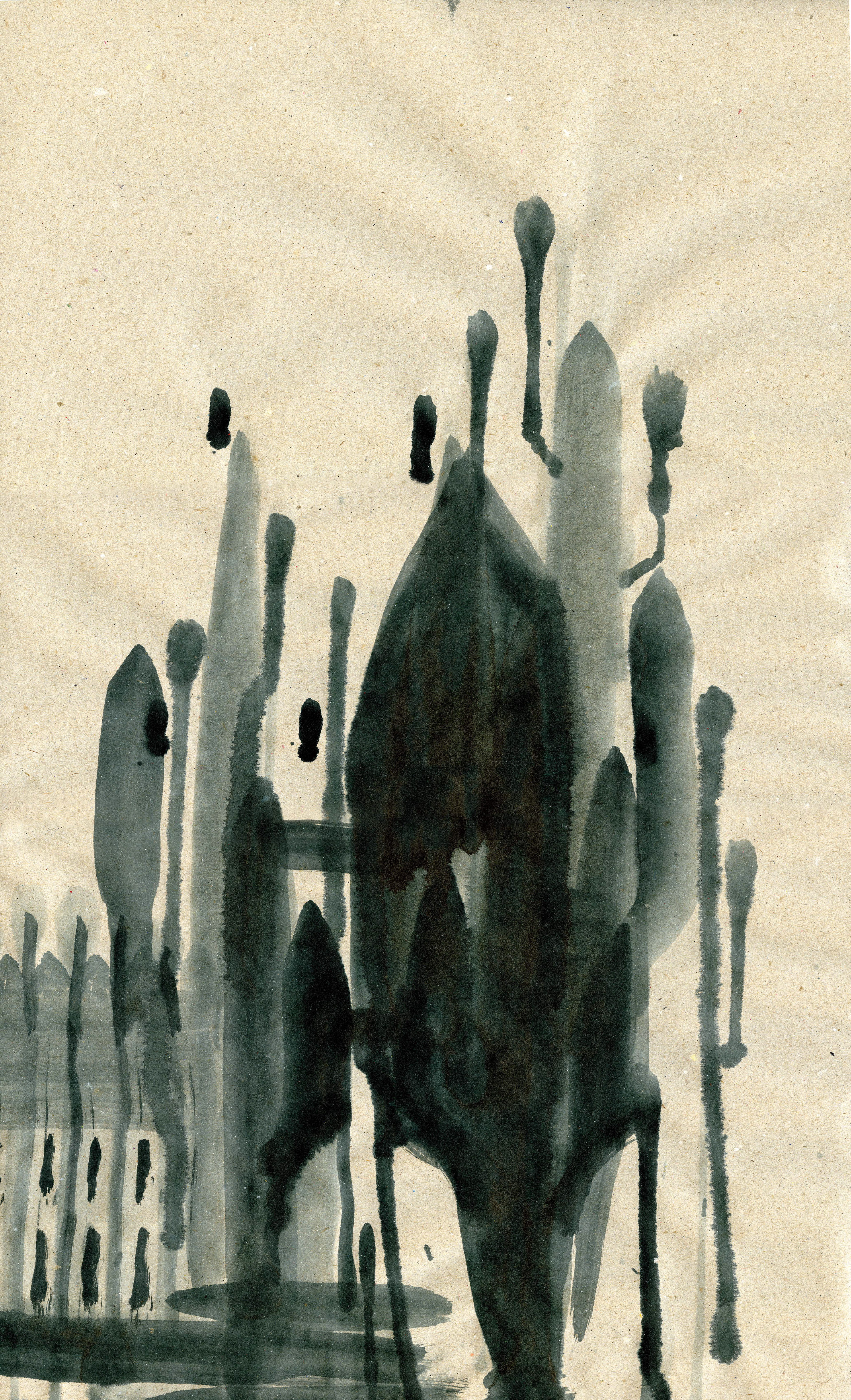
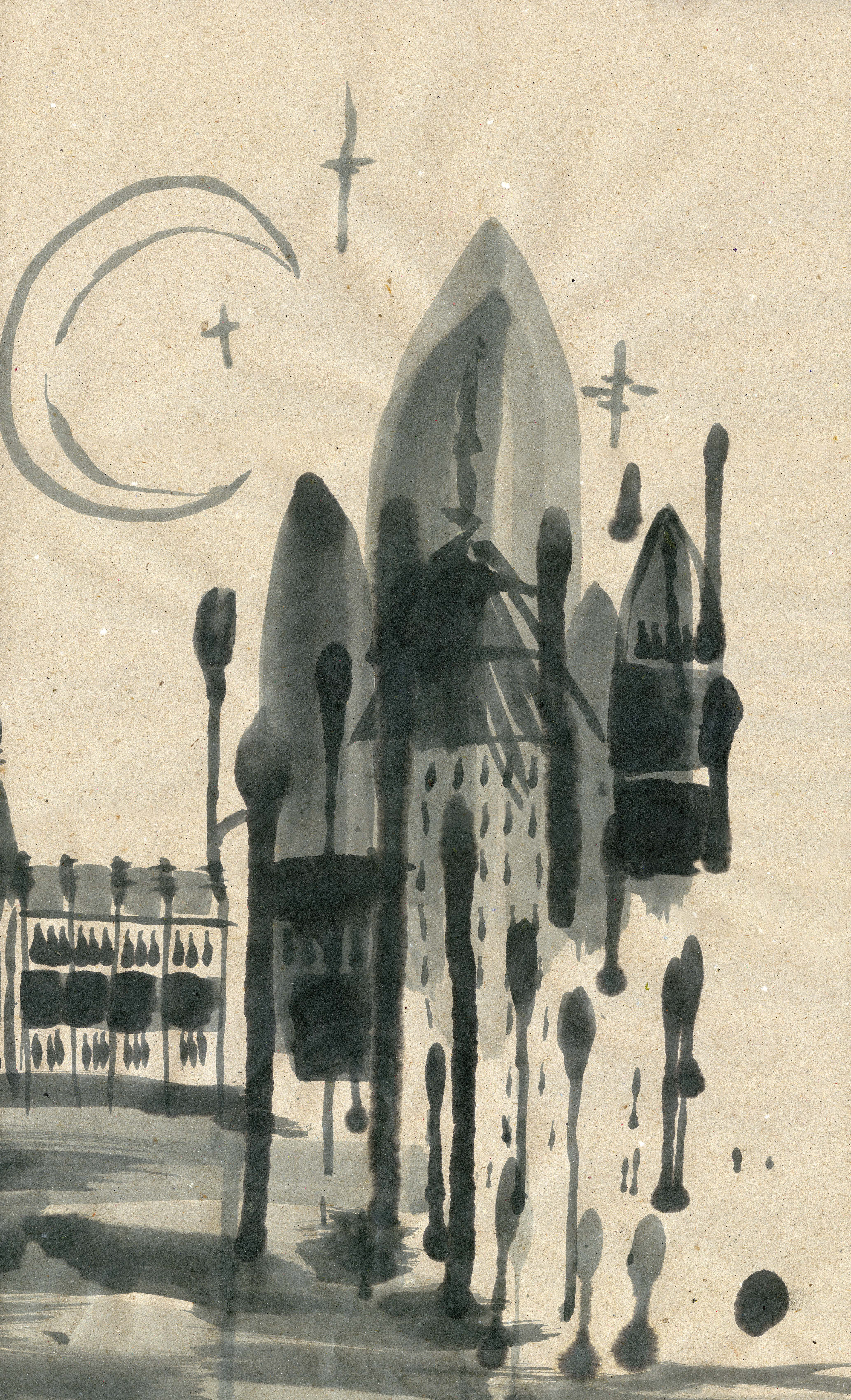
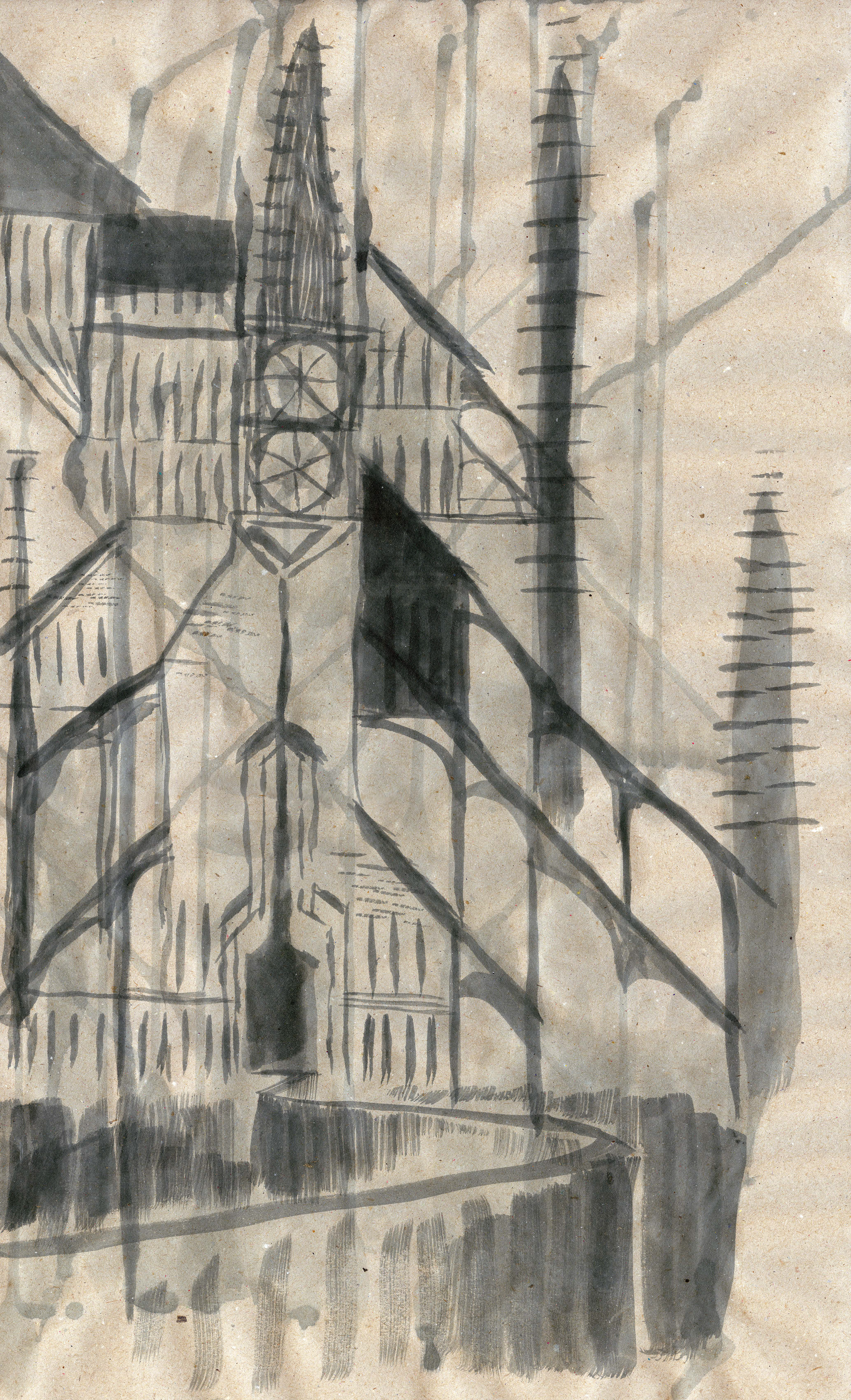
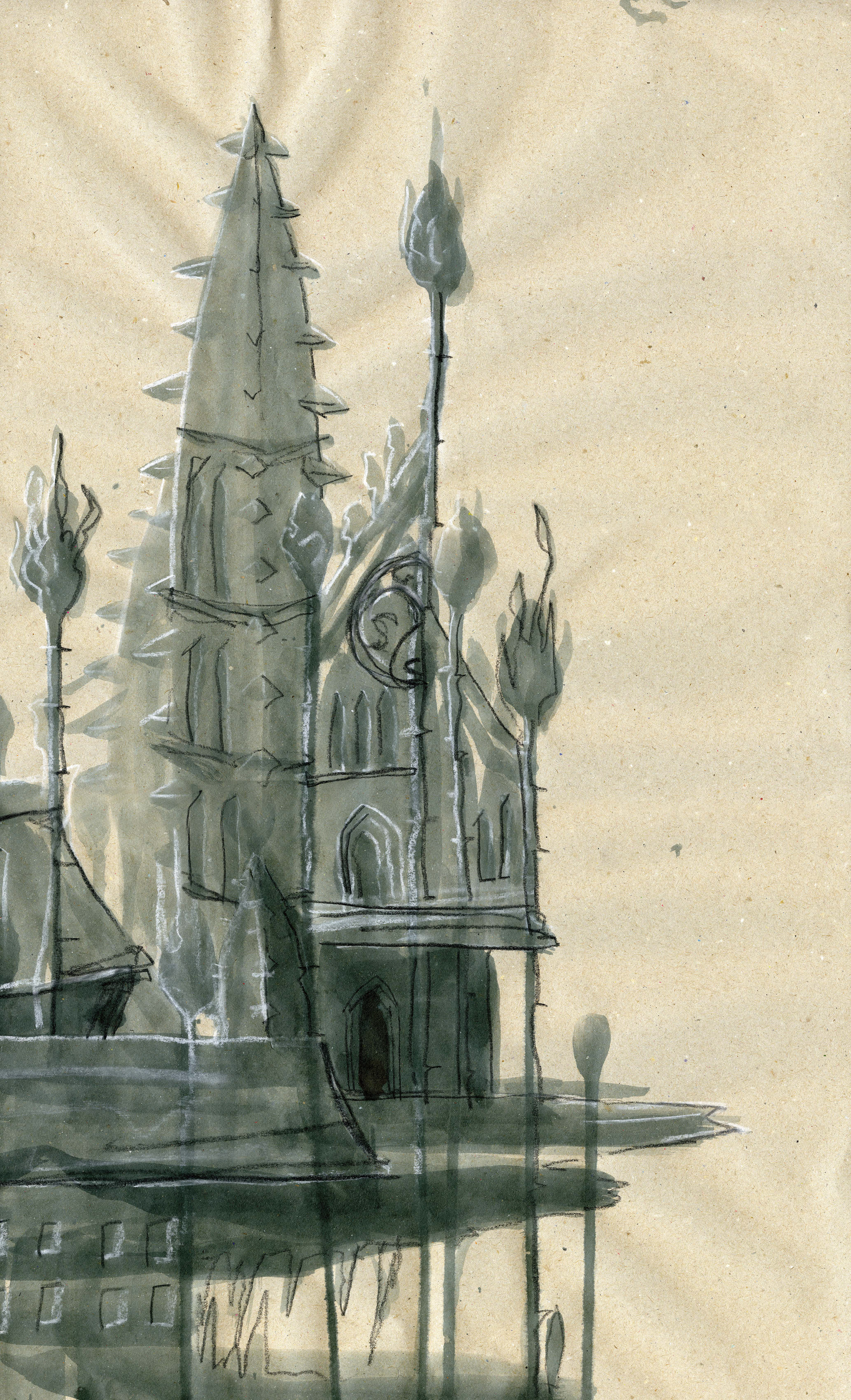
These ink paintings were part of the design process to develop the organic style of the castle. I love painting traditionally in the first stages since it allows more conincidence and therefore inspiration.
The dining room beaming with flies and maggots, the place where Eispin leaves whole finessed meals he cooked to rot away in memory of his lost love.
Echo enjoys the warmth of the cozy fireplace; hanging above is the stark reminder of his fate.
Deep into the dangerous forrest lays the secret ingredient for an essential drank.
It is mentioned in the novel that the main scene of action takes place in an organic looking castle build out of thousands of stones, formed into pointed arches. With this information and more additional clues I interpreted the building was build in the brick gothic found in Hanseatic cities. In the next step I traveled to Lübeck to research and the architecture.
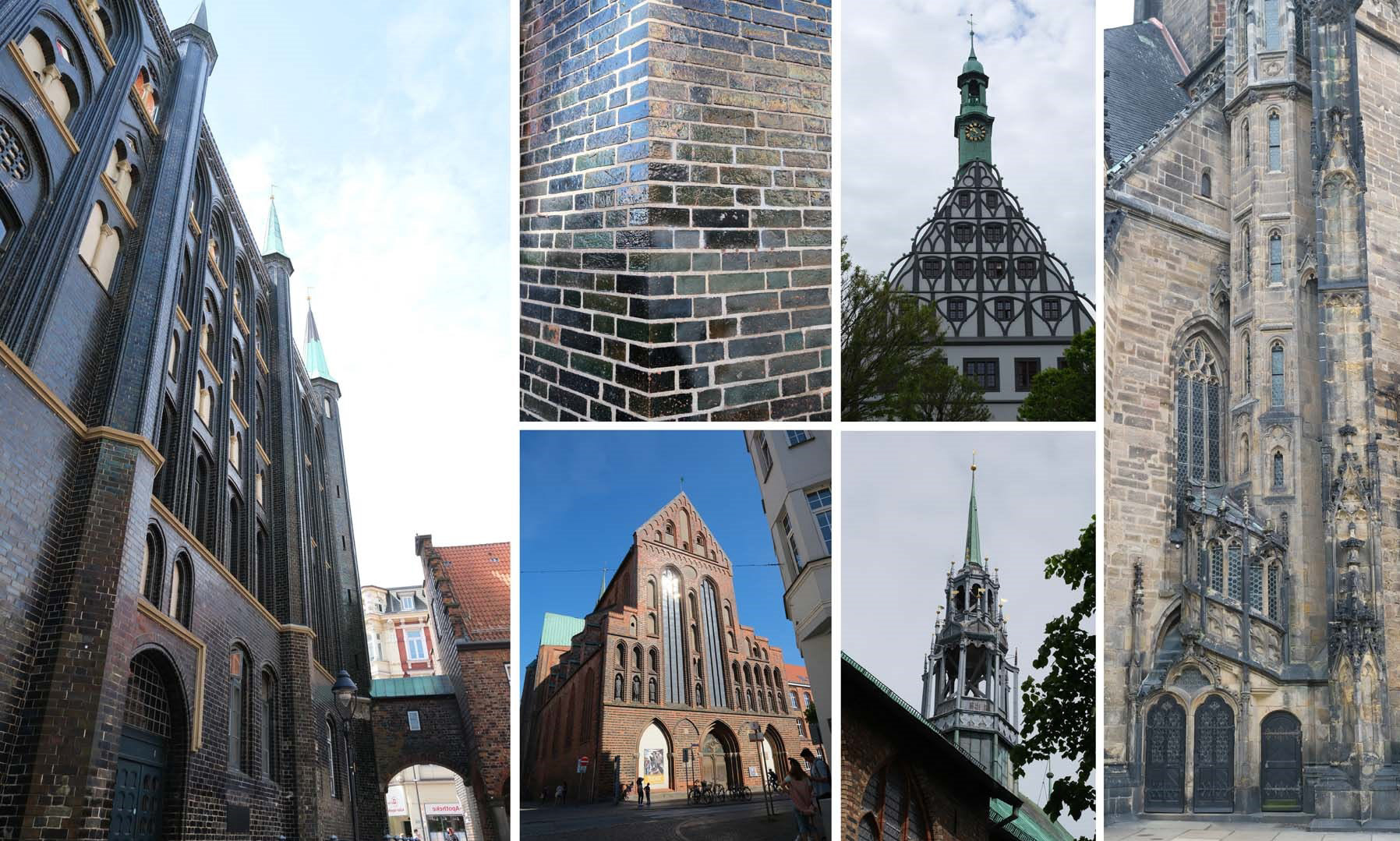
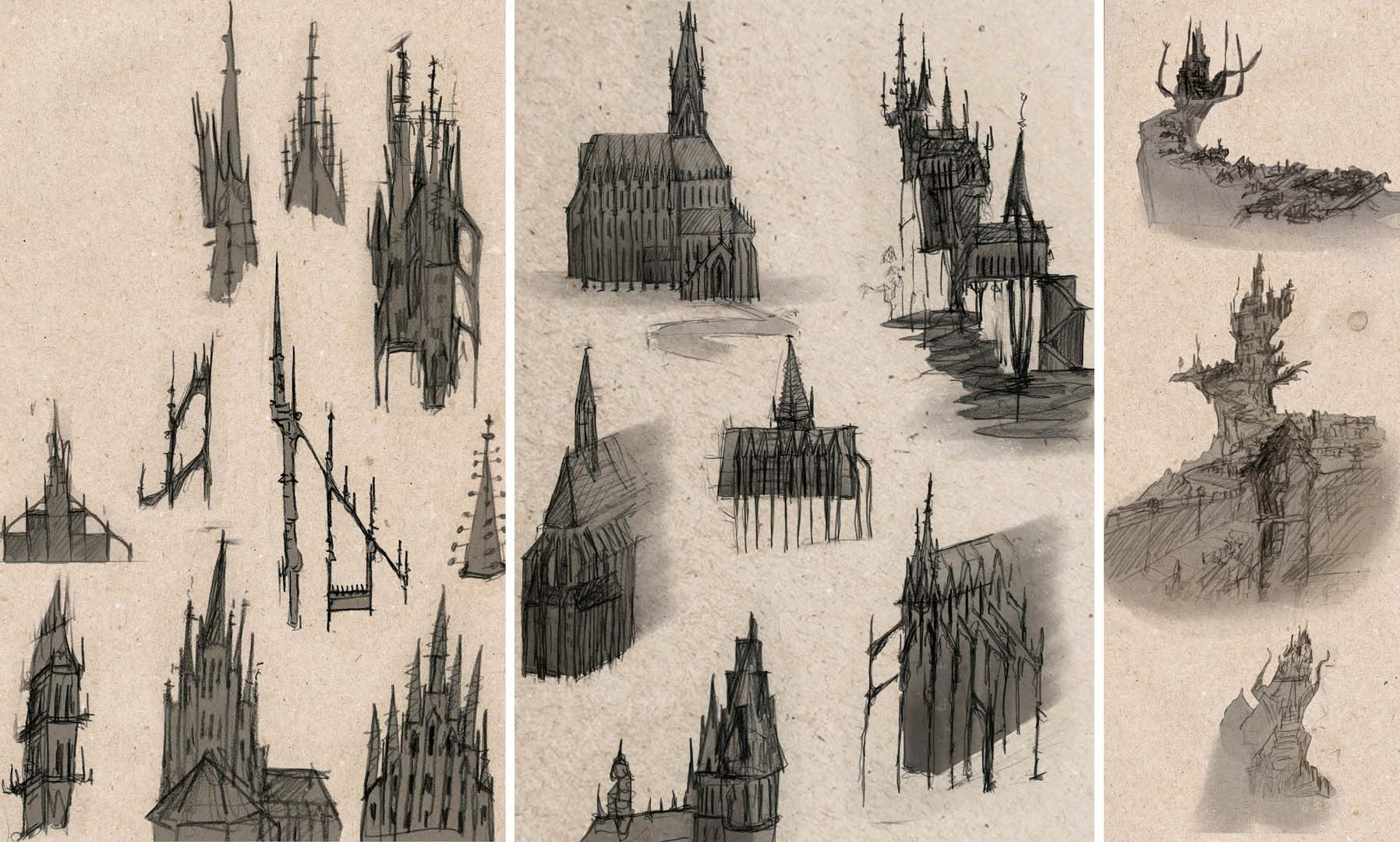
On my exploration tours through the hanseatic cities I also began sketching out my first ideas how the main bulding could look like.
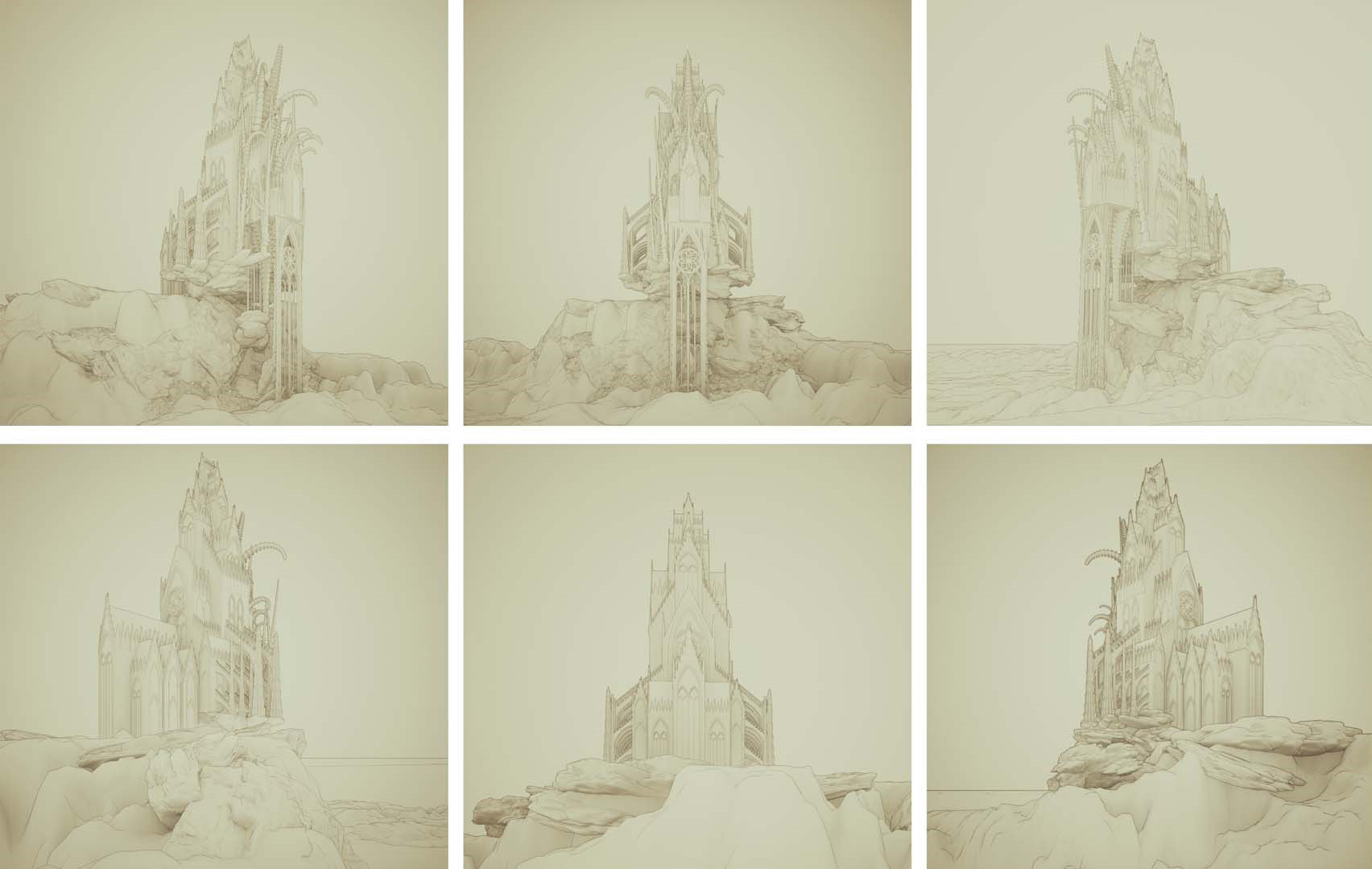
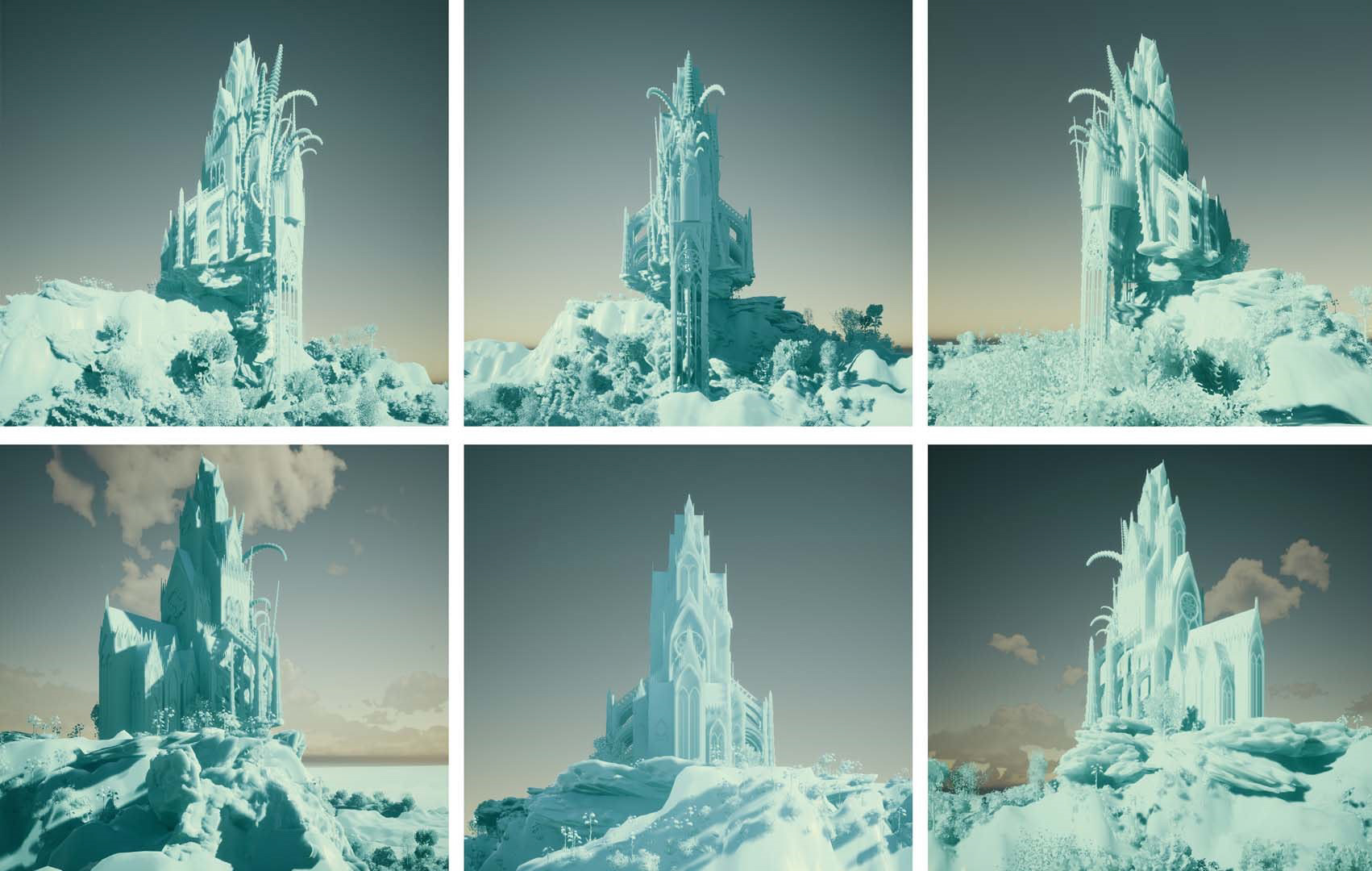
I created the model in the CAD-Program Blender. For this I cuild a "gothic construction kit" and worked on the architectual composition.
Afterwards I set the materials, landscape and atmosphere in the unreal-engine Twinmotion.
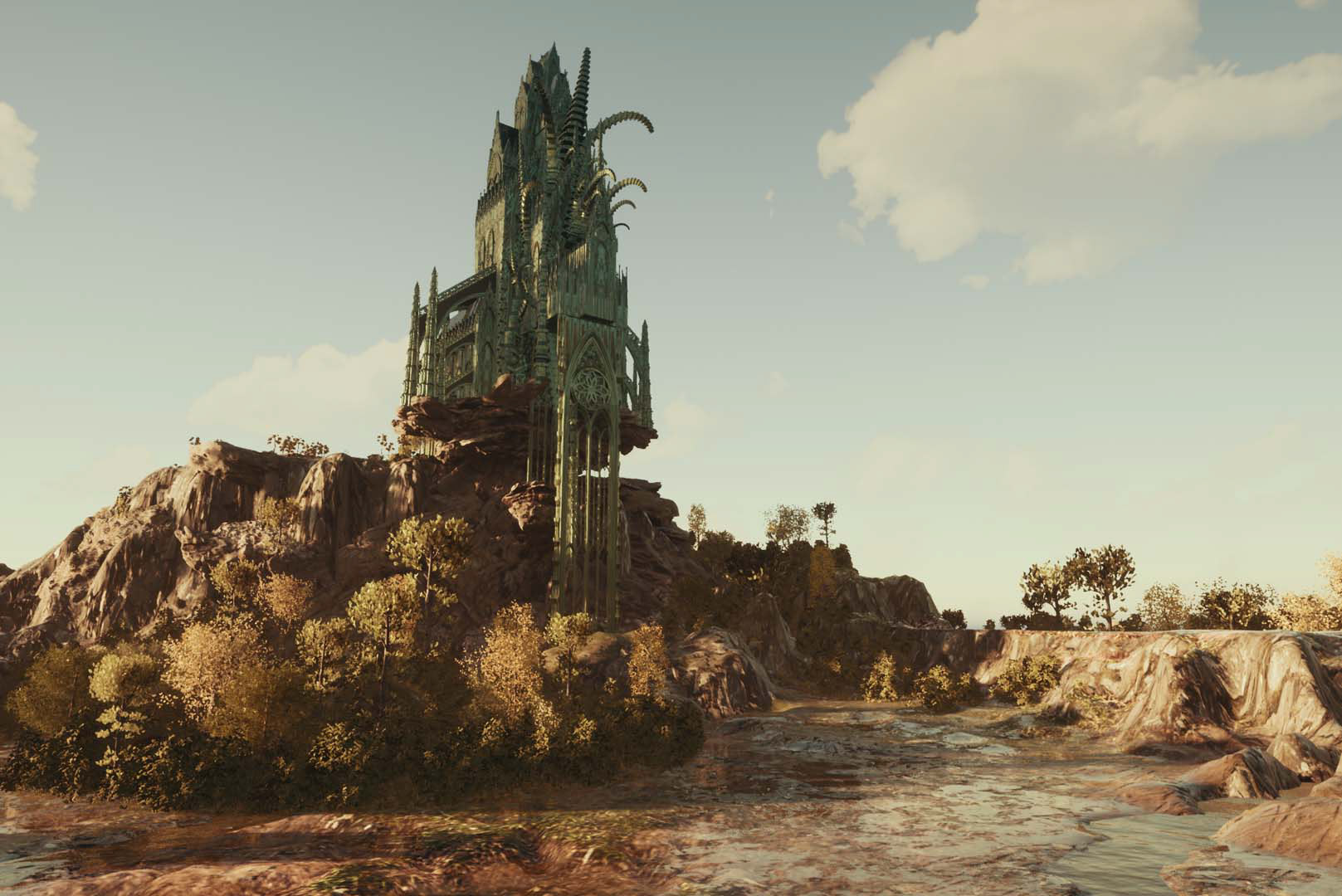
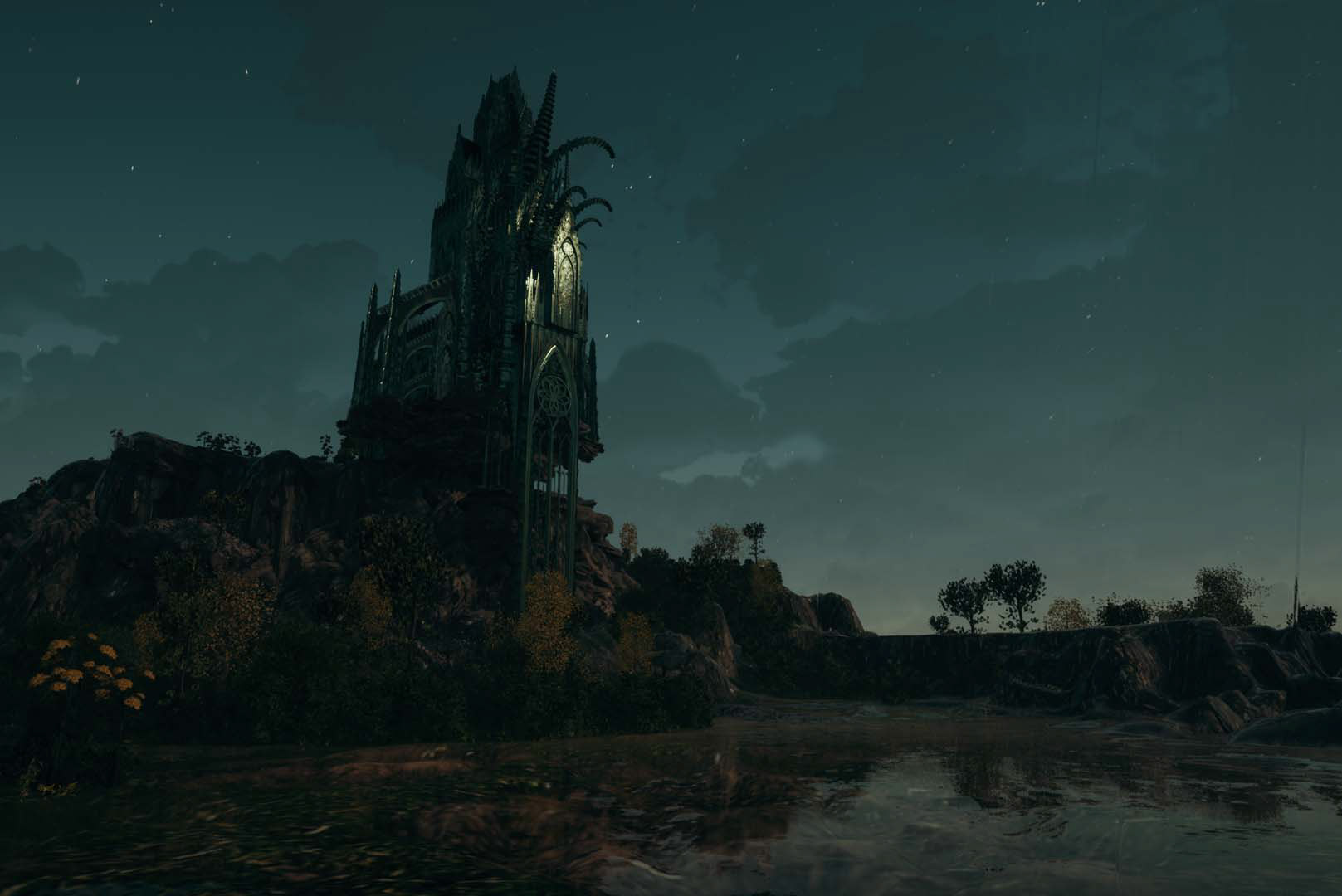
Auszeichnung „bdia anerkannt!“
Bachelor für Veronika Stumpf: „Echo –
Concept Art zum
Roman „Der Schrecksenmeister“
Jurybegründung: In Ihrer Arbeit „Echo“ setzt sich die Studentin
mit dem Bereich „Szenografie“ und „Bühnenbild“
auseinander. Es werden stimmungsvolle Szenenbilder
entwickelt, welche anhand von einem dreidimensionalen
Modell zu einem „Leveldesign“ verdichtet werden. Die
Jury würdigt außerdem den mutigen Brückenschlag zu
neuen szenografischen Beschäftigungsfeldern in „digitalen
Räumen“
Die Bewertung der Abschlussarbeiten erfolgte am 30.
11. 2021
Jury: Julian Hensch | bdia Bayern, Sabine Mahl, Auwi
Stübbe, Katja Moltrecht, Michael Vogler
Bachelor für Veronika Stumpf: „Echo –
Concept Art zum
Roman „Der Schrecksenmeister“
Jurybegründung: In Ihrer Arbeit „Echo“ setzt sich die Studentin
mit dem Bereich „Szenografie“ und „Bühnenbild“
auseinander. Es werden stimmungsvolle Szenenbilder
entwickelt, welche anhand von einem dreidimensionalen
Modell zu einem „Leveldesign“ verdichtet werden. Die
Jury würdigt außerdem den mutigen Brückenschlag zu
neuen szenografischen Beschäftigungsfeldern in „digitalen
Räumen“
Die Bewertung der Abschlussarbeiten erfolgte am 30.
11. 2021
Jury: Julian Hensch | bdia Bayern, Sabine Mahl, Auwi
Stübbe, Katja Moltrecht, Michael Vogler
